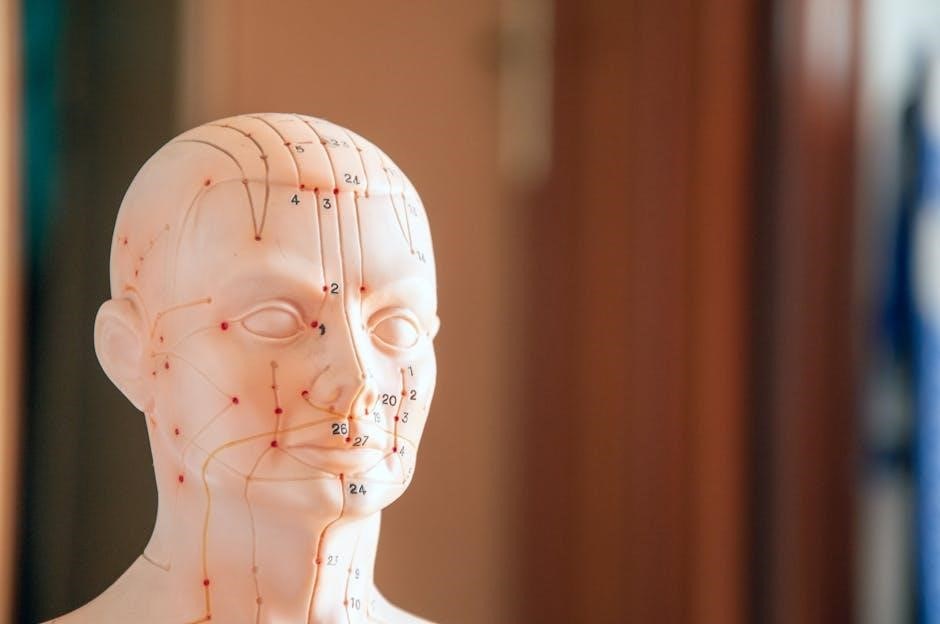
Fire-Lite ES-200X Manual: Overview
The Fire-Lite ES–200X Manual serves as a comprehensive guide to understanding and operating the ES–200X addressable Fire Alarm Control Panel (FACP)․ This manual provides essential information for installation‚ programming‚ and troubleshooting․ It details the system’s features and limitations‚ aiding users in effective system management and maintenance․ The manual ensures proper use‚ adhering to safety and reliability guidelines․

ES-200X: Product Description and Features
The ES–200X is FireLite Alarms’ latest intelligent addressable Fire Alarm Control Panel (FACP)‚ designed as a direct replacement for the MS-9200UDLS․ This compact and cost-effective panel supports up to 198 addressable devices‚ including 99 detectors and 99 modules․ It comes pre-installed with a communicator‚ facilitating easy connection to central stations via internet or phone lines․ The ES–200X programs similarly to other Fire-Lite addressable products‚ making it user-friendly for technicians familiar with the brand․
Key features include manual sensitivity adjustment‚ day/night automatic sensitivity adjustment‚ and an auto detector test that meets NFPA 72 standards․ The panel also boasts automatic device type programming‚ simplifying the setup process․ The ES–200X is designed for early fire detection and efficient mass notification‚ enhancing life safety in various applications․ Its extensive list of powerful features makes it suitable for applications previously served only by conventional panels‚ offering an upgrade in performance and functionality․
The ES–200X supports features such as alarm verification‚ maintenance alert‚ and drift compensation․ Additionally‚ the FACP provides extensive diagnostics and reporting capabilities‚ simplifying system maintenance and troubleshooting․ The ES–200X is UL listed for fire protection service‚ offering peace of mind․ It offers a robust‚ reliable‚ and cost-effective solution for fire detection and alarm systems․
ES-200X: Installation Precautions
Adherence to the following precautions will ensure a problem-free installation and long-term reliability of the ES–200X Fire Alarm Control Panel․ Before commencing any installation work‚ it is crucial to disconnect all power sources connected to the fire alarm control panel․ Multiple power sources can be connected‚ posing a risk of equipment damage and personal injury if not disconnected before servicing․
Ensure the installation environment is suitable‚ protecting the panel from excessive moisture‚ dust‚ and extreme temperatures․ Proper grounding is essential to prevent electrical noise and ensure the system operates correctly․ All wiring must conform to local and national electrical codes‚ and only approved wiring methods should be used․
Handle electronic components carefully to avoid electrostatic discharge (ESD) damage․ Use a grounded wrist strap when working with the panel’s internal components․ When mounting the panel‚ ensure it is securely fastened to a stable surface to prevent movement or damage․ Verify that all connections are tight and secure before applying power․ After completing the installation‚ thoroughly test the system to confirm that all devices are functioning as expected․
Do not install the system in hazardous locations or environments with explosive gases or vapors․ Always consult the ES–200X manual for detailed installation instructions and safety guidelines․

ES-200X: Wiring and Power Installation
Proper wiring and power installation are crucial for the reliable operation of the ES–200X Fire Alarm Control Panel․ Before initiating any wiring work‚ disconnect all power sources to prevent electrical shock or damage to equipment․ The ES–200X supports both primary AC power and backup battery power․
For AC power‚ connect the panel to a dedicated‚ properly grounded circuit․ Ensure the voltage and current ratings match the panel’s specifications as detailed in the manual․ Use appropriately sized wiring for all power connections‚ following national and local electrical codes․ Securely terminate all wires to prevent loose connections‚ which can lead to intermittent operation or system failure․
The backup battery system provides power in the event of an AC power loss․ Connect the batteries according to the polarity markings and ensure they are fully charged before system activation․ Regularly inspect the batteries for corrosion or damage and replace them as needed‚ following the manufacturer’s recommendations․
All signal wiring‚ including initiating and notification circuits‚ must be installed using shielded cable to minimize electrical interference․ Clearly label all wiring runs to facilitate troubleshooting and maintenance․ After completing the wiring and power installation‚ verify the system’s functionality through comprehensive testing․
ES-200X: Addressable Device Support
The ES–200X Fire Alarm Control Panel offers robust support for a wide range of addressable devices‚ enhancing its versatility and adaptability to various fire detection needs․ It accommodates up to 198 addressable devices‚ divided into 99 detectors and 99 modules‚ providing comprehensive coverage for different areas within a building;
Supported detectors include smoke detectors‚ heat detectors‚ and multi-criteria detectors‚ each offering unique sensing capabilities to identify fire conditions accurately․ These detectors can be programmed with different sensitivity settings to minimize false alarms while ensuring prompt fire detection․ The addressable modules include monitor modules‚ control modules‚ and relay modules‚ enabling the integration of various external devices and systems․
Monitor modules allow the panel to supervise conventional detectors and alarm initiating devices‚ expanding the system’s monitoring capabilities․ Control modules enable the panel to activate suppression systems‚ door releases‚ and other auxiliary functions․ Relay modules provide isolated contacts for controlling external equipment based on alarm conditions․
Each addressable device is assigned a unique address‚ allowing the panel to pinpoint the exact location of an alarm or fault․ This feature significantly reduces response time and simplifies troubleshooting․ Proper configuration and addressing of these devices are critical for the system’s effective operation․
ES-200X: Programming and Configuration
The ES–200X Fire Alarm Control Panel offers flexible programming and configuration options to tailor the system to specific building requirements and operational preferences․ Programming can be accomplished through the panel’s keypad or via a PC-based programming tool‚ providing different levels of accessibility and control․
Keypad programming allows for basic configuration tasks such as device addressing‚ zone assignments‚ and output configurations․ The PC-based tool provides a more comprehensive programming environment‚ enabling advanced features like cause-and-effect programming‚ custom messaging‚ and detailed system diagnostics․
Cause-and-effect programming allows users to define specific actions based on different input events‚ such as activating notification appliances or releasing fire suppression systems․ Custom messaging enables the display of specific text messages on the panel’s LCD screen to provide clear and concise information to responders․
The configuration process involves setting up device parameters‚ defining zone assignments‚ and configuring output circuits․ Proper configuration is essential for ensuring that the system responds appropriately to fire conditions and that all devices operate as intended․ Regular testing and verification of the programmed settings are recommended to maintain system integrity and reliability․
The ES–200X also supports features like automatic device mapping and walk test‚ streamlining the setup and maintenance processes․
ES-200X: Troubleshooting
Effective troubleshooting is vital for maintaining the reliability of the ES–200X fire alarm system․ This section outlines common issues and diagnostic procedures to quickly identify and resolve problems․
Start by checking the system’s event log for recent alarms‚ troubles‚ or supervisory events‚ as these often provide clues to the source of the problem․ Verify that all connected devices are properly addressed and communicating with the panel․ Inspect wiring connections for loose or damaged wires‚ and ensure proper power supply voltage to all system components․
Common issues include ground faults‚ open circuits‚ and short circuits‚ each requiring specific diagnostic steps․ Use a multimeter to test for continuity and voltage levels to isolate wiring problems․ For addressable devices‚ use the panel’s diagnostic tools to verify communication and device status․
Troubleshoot notification appliance circuits (NACs) by checking for proper wiring and device compatibility․ Verify that all notification devices are functioning correctly․ If communication issues arise‚ check the SLC loop wiring and ensure that all devices are within the loop’s specified capacity․
When troubleshooting‚ always consult the ES–200X manual for detailed procedures and specifications․ Record all troubleshooting steps and findings to help identify recurring issues and track maintenance activities․ Regular maintenance and testing can prevent many common problems and ensure system reliability․

ES-200X: Limitations of Fire Alarm Systems
It’s crucial to understand the limitations inherent in fire alarm systems‚ including the ES–200X‚ to ensure realistic expectations regarding their performance․ Fire alarm systems provide early warning but do not guarantee complete protection against fire damage or personal injury․
Smoke detectors have limitations‚ as smoke must reach the detector for it to activate․ Factors like closed doors or the fire’s location can delay detection․ Heat detectors respond to temperature increases and may be slower to activate than smoke detectors in certain situations․ Manual pull stations rely on human intervention and may not be activated promptly․
Environmental factors like high humidity‚ dust‚ or extreme temperatures can affect detector performance‚ potentially causing false alarms or reduced sensitivity․ Power outages can disable the system unless backup power is available and functioning correctly․
Fire alarm systems are designed to alert occupants‚ but evacuation depends on effective emergency planning and occupant response․ Systems are not a substitute for fire insurance; they lower insurance rates but do not compensate for property loss․
Regular maintenance‚ testing‚ and adherence to the manufacturer’s recommendations are essential to minimize the impact of these limitations and ensure the system functions as intended․ Understanding these limitations helps users implement supplementary safety measures for comprehensive fire protection․
ES-200X: Manual Revisions and Updates
The ES–200X Manual is a living document‚ subject to revisions and updates as new features are added‚ and existing functionalities are enhanced․ These revisions ensure that users have the most accurate and up-to-date information available for operating and maintaining their fire alarm systems․ Regularly checking for updates is crucial for optimal system performance․
Revisions may include changes to installation procedures‚ programming guidelines‚ troubleshooting tips‚ and compatibility information for new devices․ Users should pay close attention to the revision date on the manual to identify if they possess the latest version․ Updates are often available on the Fire-Lite Alarms website‚ accessible in PDF format for easy download and reference․
Significant revisions are typically highlighted with revision marks or notes within the document‚ indicating the specific sections that have been modified․ These updates address any known issues‚ clarify ambiguous instructions‚ or provide additional details to improve user understanding and system reliability․
Always refer to the most recent version of the ES–200X Manual to ensure that you are following the correct procedures and guidelines․ Staying current with manual revisions is essential for maintaining a safe and effective fire alarm system․

ES-200X: Related Fire-Lite Alarm Manuals
To gain a comprehensive understanding of fire alarm systems and related components‚ it is beneficial to consult other Fire-Lite alarm manuals․ These related manuals provide additional insights into specific devices‚ system configurations‚ and troubleshooting techniques‚ enriching your knowledge beyond the ES–200X panel itself․ Exploring these resources can enhance your ability to manage and maintain a reliable fire safety system․
For example‚ the MS-9600UDLS and MS-9200UDLS owner’s manuals offer valuable information on larger‚ more complex systems‚ allowing for a broader perspective on fire alarm technology․ Similarly‚ the ES-50X owner’s manual provides details on a smaller system‚ which can be useful for scaling solutions or understanding different application scenarios․
Additionally‚ manuals for devices like the MS-5UD and MS-10UD offer detailed instructions on specific components that may integrate with the ES–200X‚ such as addressable modules and detectors․ Consulting these manuals allows for optimized integration and enhanced system performance․
By cross-referencing information across different Fire-Lite alarm manuals‚ users can develop a well-rounded understanding of fire alarm systems‚ enabling them to effectively troubleshoot issues‚ configure systems‚ and ensure the overall safety and reliability of their fire protection infrastructure;